Florida isn’t just fighting hurricanes—it’s battling an invasion.
From giant snakes slithering through the Everglades to lizards sunbathing on city sidewalks, Florida has become ground zero for some of the strangest—and most stubborn—non-native species in the country.
Blame the heat. Blame the humidity. Blame decades of exotic pets and plants slipping through the cracks. Whatever the cause, the result is a wild, unpredictable ecosystem where invaders often win.
These creatures aren’t just out of place—they’re changing everything. Devouring native wildlife. Spreading fast. And proving almost impossible to control.
Let’s dive into why Florida has more invasive species than anywhere else in the U.S.—and meet some of the most bizarre and brazen ones now calling it home.
Burmese Python
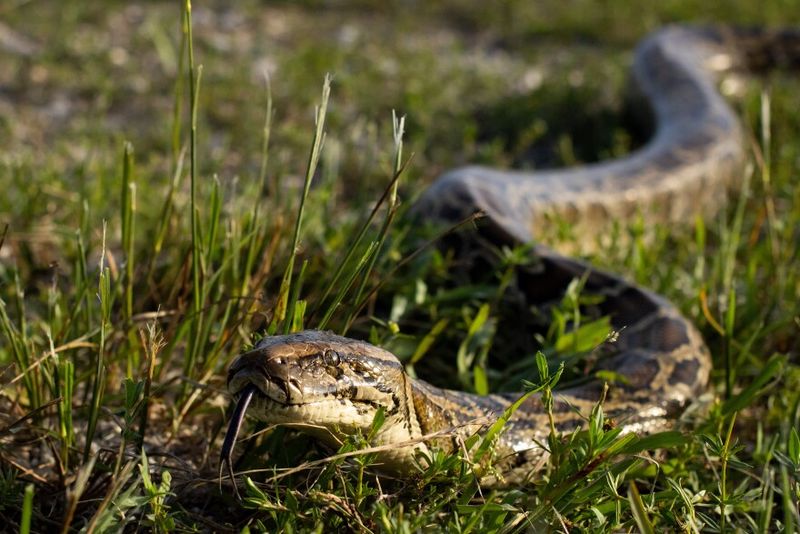
In the heart of the Everglades, the Burmese python silently slithers, its presence almost ghostly amidst the marshes. Initially introduced as exotic pets, these creatures have found the lush Floridian wetlands to be an ideal environment.
With their rapid reproduction and lack of natural predators, they’ve become dominant hunters, consuming native wildlife. A striking example of adaptability, their presence has reshaped the ecological balance, highlighting the dangers of invasive species.
It’s a fascinating, albeit concerning, testament to nature’s unpredictability and the unintended consequences of human choices.
Lionfish

The lionfish, with its colorful, venomous spines, mesmerizes divers yet poses a threat to native marine life. Accidentally released into the waters off Florida, this predator thrives in the coral reefs.
Its voracious appetite for small fish disrupts the delicate marine ecosystem. Efforts to control its spread include promoting lionfish as a culinary delicacy. Its beauty contrasts sharply with the havoc it wreaks on biodiversity.
This paradox serves as a reminder of the fragility of marine environments and the impact of introducing foreign species.
Cane Toad
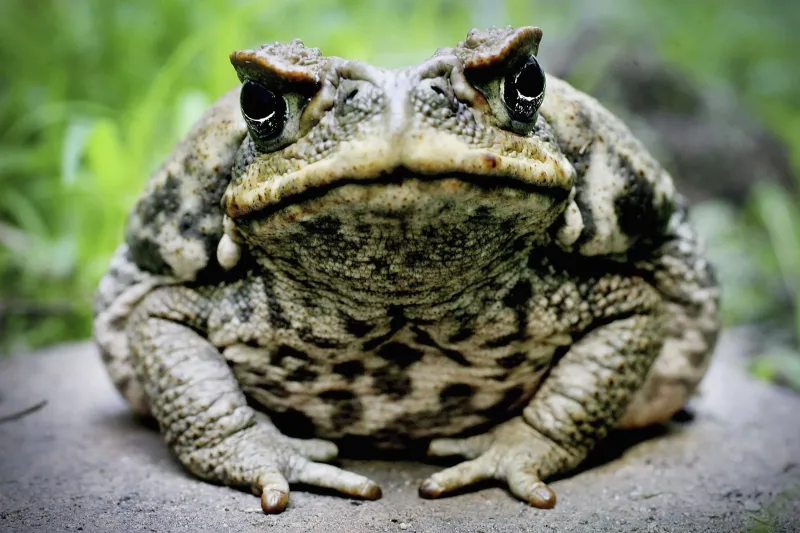
Introduced to manage pests in sugarcane fields, the cane toad has hopped its way into Florida’s ecosystem with unintended consequences.
Known for its toxic skin, it poses a significant threat to pets and wildlife that mistakenly prey on it. Its prolific breeding ensures a steady increase in population, outcompeting native species for food and habitat.
This tale of an ecological misstep underscores the complexity of biological control and the ripple effects of such interventions.
Green Iguana
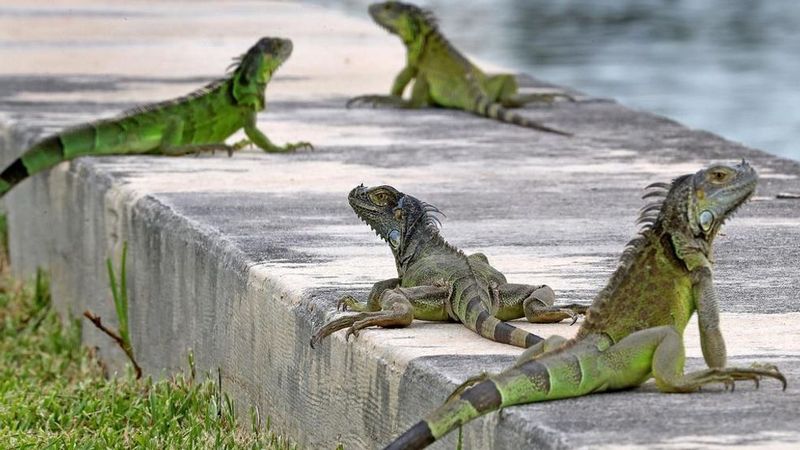
Once a popular pet, the green iguana has found freedom in Florida’s warm climate. These reptiles, now abundant, bask in the sun on sidewalks and garden walls.
Their presence, although visually appealing, leads to structural damage and competition with native species for resources. Their rapid spread is a classic case of overpopulation, where human negligence plays a pivotal role.
This situation highlights the need for responsible pet ownership and the broader implications of releasing non-native species into wild habitats.
Feral Hogs
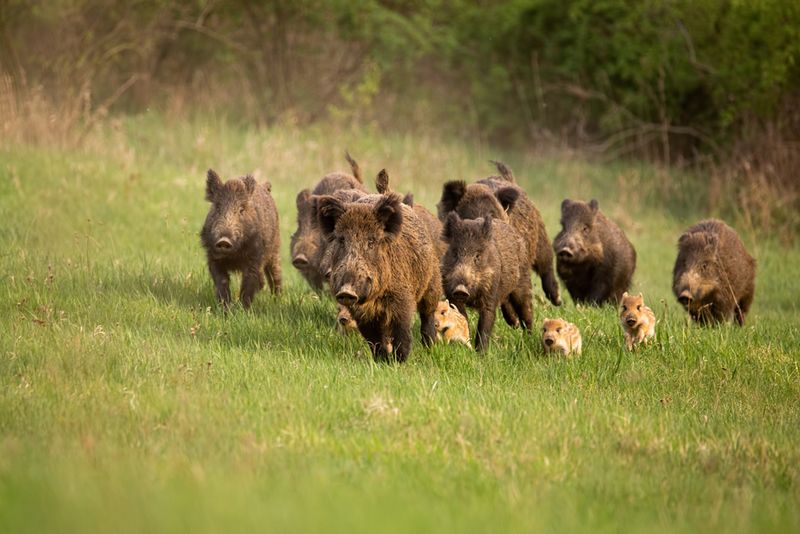
Roaming the wilds of Florida, feral hogs are a force to be reckoned with. These descendants of domestic pigs have adapted to the wild, causing havoc across the state’s ecosystems.
Feral hogs are notorious for their destructive feeding habits, rooting through soil and vegetation, and leaving behind a trail of destruction. Their omnivorous diet allows them to compete with native species for food, and their presence can lead to significant agricultural damage.
Efforts to manage their populations include hunting and trapping, but their prolific breeding makes them a continuous challenge. Despite their impact, feral hogs have become an entrenched part of Florida’s wildlife tapestry.
Tegu Lizard
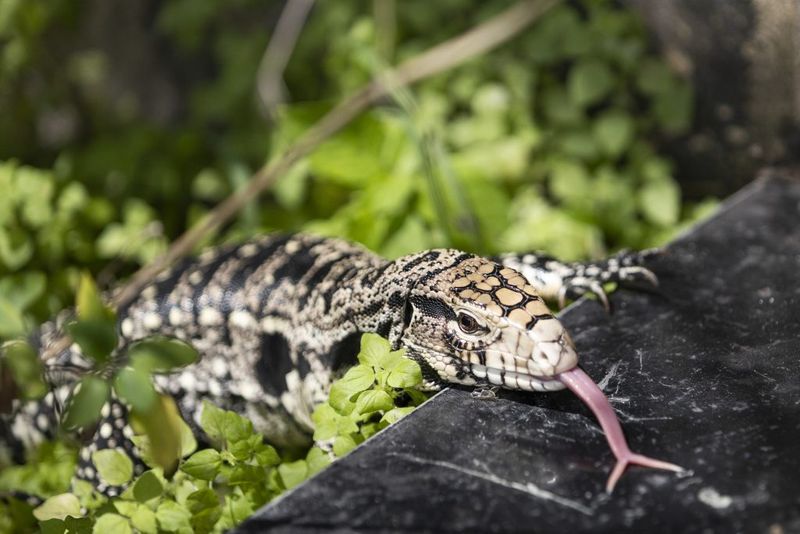
With curiosity in its eyes, the Tegu lizard explores the subtropical forests of Florida. Originating from South America, these lizards have adapted well to their new environment, posing risks to native ground-dwelling animals.
Their omnivorous diet means they compete with other wildlife for food. Their adaptability is impressive, yet their presence signifies another layer of the invasive species challenge in Florida.
This underscores the persistent threat posed by exotic pets when released into the wild.
Brown Anole
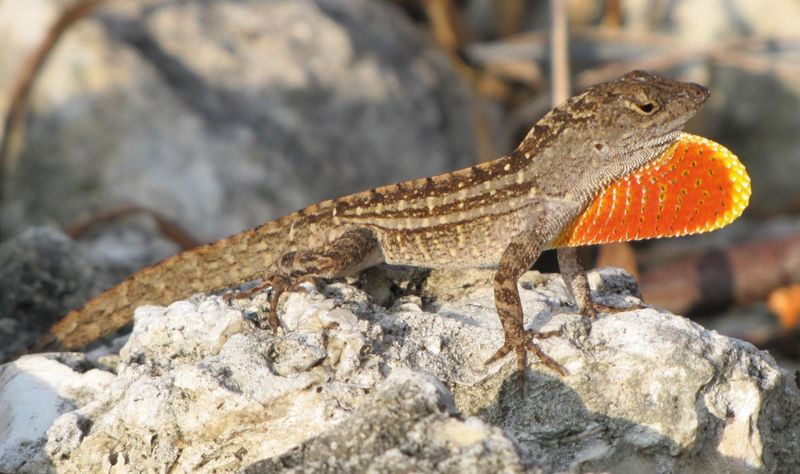
The Brown Anole, with its distinctive long tail and agile movements, has become a common sight in Florida’s gardens and parks. This small lizard, originally from the Caribbean, was introduced to Florida in the early 1970s.
Unlike its native cousin, the Green Anole, the Brown Anole thrives in urban environments, adapting quickly to changes. It can be seen basking in the sun or hiding among the foliage, adding a touch of exoticism to the local landscape.
Its rapid reproduction and adaptability make it a formidable competitor, often outcompeting native species for food and habitat. Despite its invasive nature, many residents find its presence fascinating and enjoy observing its lively antics.
Nile Monitor
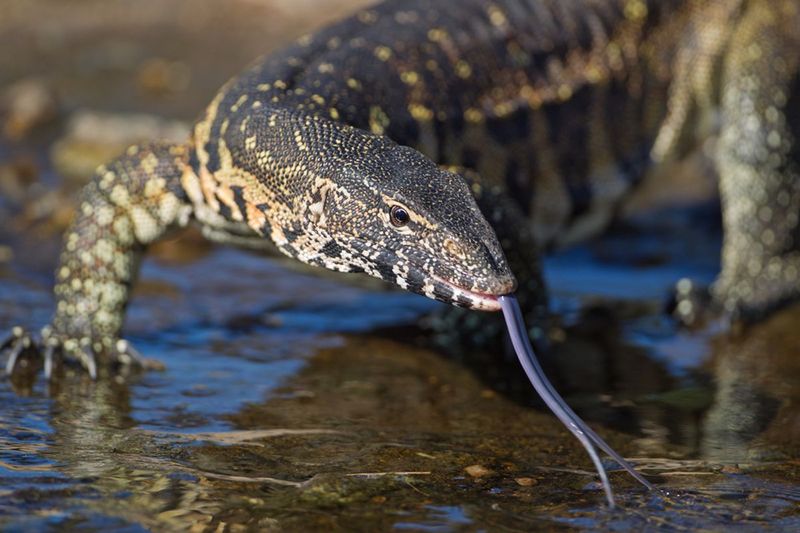
With an insatiable appetite and agile movements, the Nile Monitor is a formidable invader in Florida’s ecosystems. Originally from Africa, this reptile is often found near waterways, where it preys on local wildlife. Its presence is troubling as it competes for food with native species.
These lizards can grow up to 7 feet, making them one of the largest lizards in Florida. Their adaptability allows them to thrive in urban and rural environments alike.
Did you know? The Nile Monitor was likely introduced to Florida through the exotic pet trade, leading to accidental releases.
Burmese Biting Midge
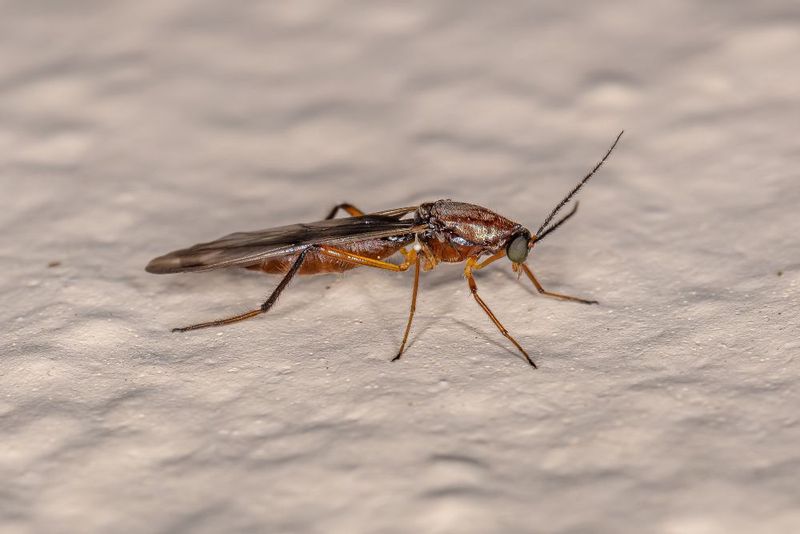
Tiny but tenacious, the Burmese Biting Midge has made a name for itself among Florida’s insect community. Originating from Southeast Asia, it has found the state’s wetlands to be an ideal habitat.
Known for its irritating bite, this midge impacts both humans and animals alike. It thrives in warm, moist environments, particularly around slow-moving or stagnant water bodies.
While its presence can be a nuisance, the midge plays a role in the food web, serving as a meal for birds and other insects. Its adaptability underscores the challenges of managing invasive species in diverse ecosystems.
Asian Swamp Eel
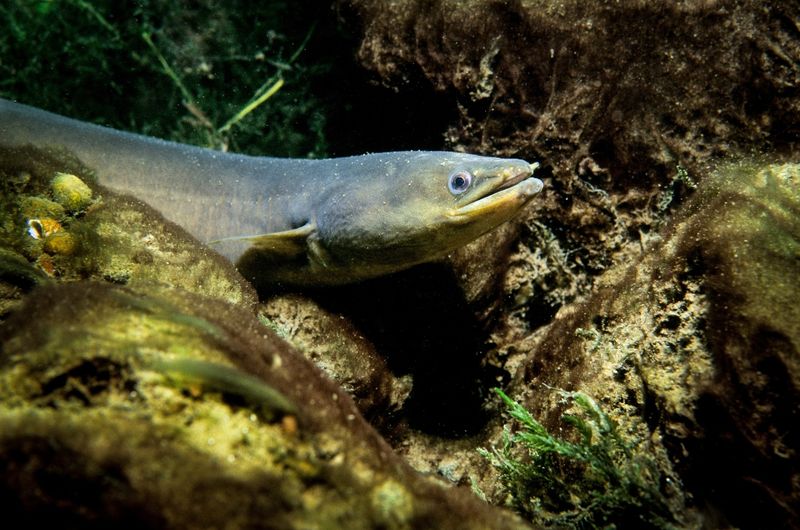
The Asian Swamp Eel is a slippery invader in Florida’s aquatic habitats. This eel can survive in both freshwater and brackish environments, making it highly adaptable. Its diet consists of fish, frogs, and crustaceans, which impacts the ecological balance.
Unlike other fish, the eel can breathe air, allowing it to traverse land to new water bodies. This mobility enhances its invasive potential.
A quirky fact: The Asian Swamp Eel can survive out of water for extended periods, contributing to its spread across various ecosystems. Management efforts aim to prevent further dispersion.

